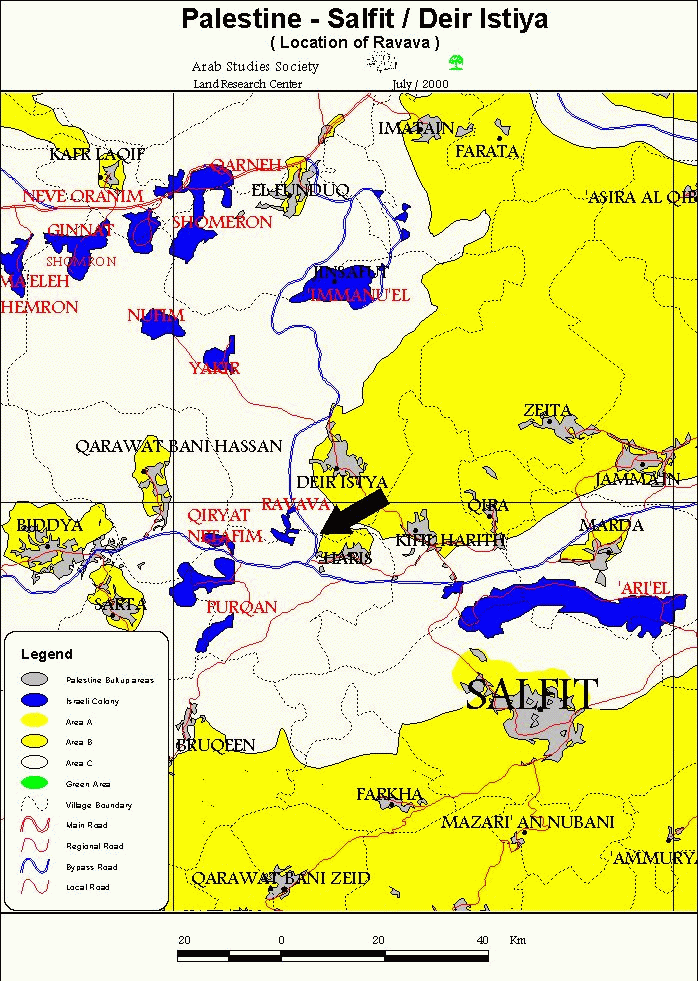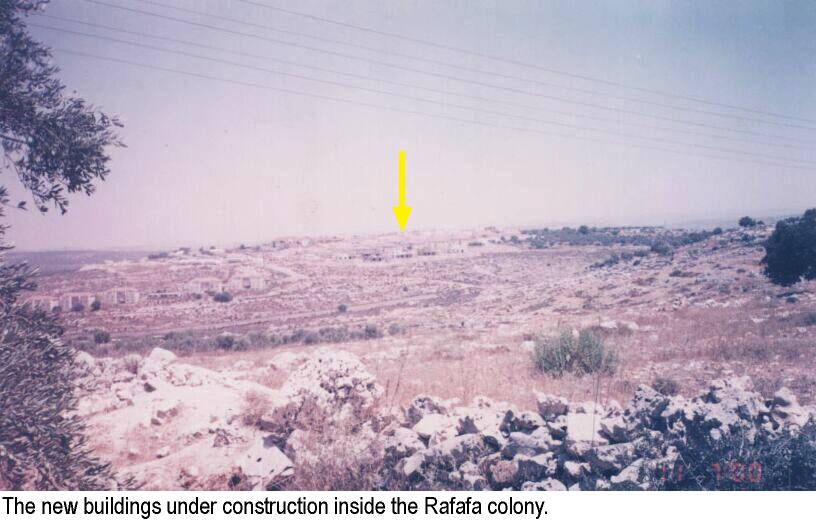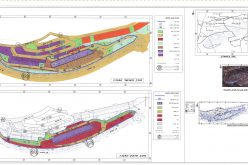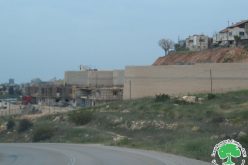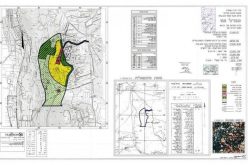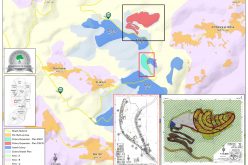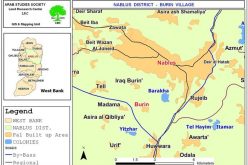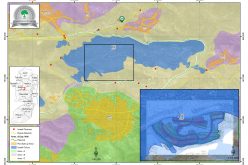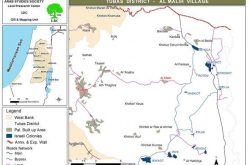Construction of New Buildings in Rafafa settlement Built on the Land of Haris Village – Salfit Governorate
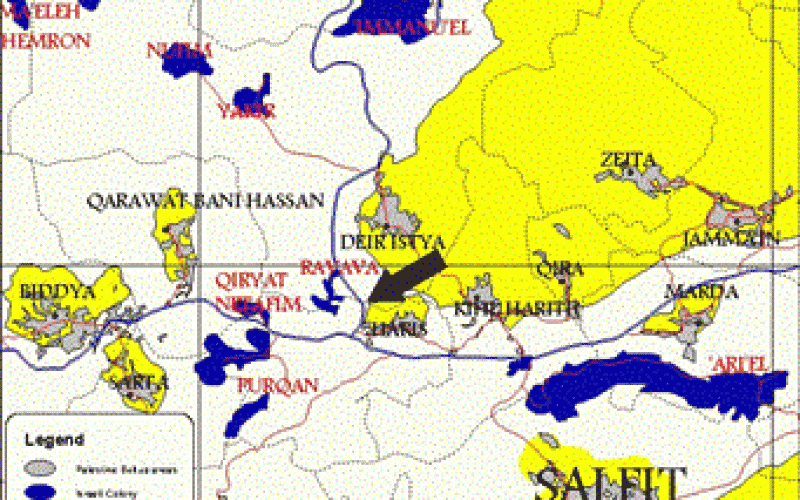
Haris at a Glance:
Haris is located 8 km northwest of Salfit City (Salfit Governorate). Its population is about 4,000 most of them are working in agriculture, particularly olive trees raising. The village has been severely affected by the colonial campaign and aggressions by the Israeli Occupation since 1967. Bypass roads, industrial zones were constructed on the village land compiled with uprooting fruitful trees estimated to be about 2500.
Date of Establishment:
The settlement was established in 1990 on the land of Haris village. It is located 1.5 km east of Haris. 286 dunums from Haris land were confiscated to built this settlement. The number of houses in this settlement are estimated to be about 120. The confiscated land belongs to tens of farmers from the village, of them are the following:
1. Inheritors of Ali Mahmoud Aqel.
2. Ya'qub Hasan Odeh.
3. Mahmoud Samarah.
4. Mohammad Sulaiman.
5. Fahim Abu Hazim.
6. Inheritors of Sa'id Ahmad Amer.
The number of new buildings currently under construction inside the settlement is 6, starting construction on January 20, 2000.
Colonizing Violations in Haris Village:
1. Part of Haris land was confiscated for the purpose of establishing Israeli industrial zone called Burqan in 1982.
2. Constructing a bypass road with a width of 100 m (Aber Alsamerah) passing from the village land. Rafafa settlement was established on the village land.
3. Constructing another bypass road parallel to the former passing from the village land.
4. The number of uprooted olive trees from the village land is estimated to be 2500.
Summary:
1. As a result of confiscating and taking over land of the village, which started in 1967 and is still going on, the farmers lost their farms and trees and consequently their major source of income. The farmers were forced to choose other types of work and professions rather than their inherited agricultural work from fathers and grandfathers.
2. This situation led to the decrease in educational levels and shift of youths to the Israeli labor market.
3. Transformation of vast areas from the village land to settlements like Rafafa and industrial zones like Burqan south of the village. This led to restriction the horizontal natural expansion of the village.
4. The brackish and untreated wastewater from the factories and adjacent settlements led to a severe environmental pollutions.
Prepared by
The Land Research Center
LRC


